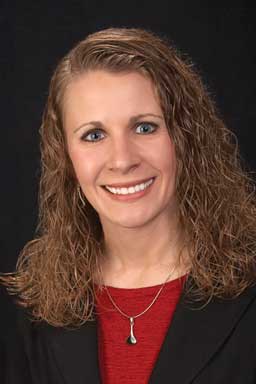I am both honored and humbled to be nominated for the position of AASV vice president. The AASV has been an integral part of not only my career but my life. I look forward to the annual meeting every year for the education, conversation, and motivation it provides. I am excited to have the opportunity to contribute to the organization that has helped shape me into the veterinarian and person I am today.
I grew up on a small farrow-to-finish and row-crop farm in southwest Iowa. I knew at a very young age that I wanted to be a veterinarian. My only exposure in those days was to mixed-animal practitioners; to me, they embodied the definition of the word “veterinarian.” During my undergraduate years, I worked for Dr Stephen P. Ford doing reproductive research investigating litter size in pigs. By the time I got to veterinary school, I started thinking I should get exposure to some species other than swine: that’s when I found out you could make a living being a “pig vet”! Beyond veterinary school requirements, my exposure to other species never did happen. I spent all my spare time with swine practitioners learning everything I could about the industry I love so much.
I obtained my Bachelor of Science (animal science) and DVM degrees from Iowa State University in 2001 and 2005, respectively. Upon graduation, I joined the Audubon-Manning Veterinary Clinic where I am currently a partner and director of sow health. I oversee the health, biosecurity, food safety, and animal welfare of all of our managed sow farms.
My husband, Steve, and I live in Audubon, Iowa. We attend the First United Methodist Church where I serve on church council and teach Sunday school for the fifth and sixth grade class.
I am involved in AASV as the chair of the Pig Welfare Committee and a member of the Production Animal Disease Risk Assessment Program committee. I have had the opportunity to be on the planning committee and to speak in both pre-conference seminars and concurrent sessions during the annual meetings. I have also had the privilege of judging the student presentations the last 3 years.
The AASV is an incredibly student-friendly organization. I’ll never forget the annual meetings I attended as a veterinary student. Practitioners went out of their way to introduce themselves, have a conversation with me, and make me feel welcome. Today, the AASV has several programs in place encouraging student involvement. Continuing this is integral to our long-term success. Helping students develop a passion for our industry while providing mentorship and teaching essential skills will ensure the longevity of not only our association, but our profession.
Each year, more student presentations are geared toward PRRS virus characteristics and testing procedures. As we continue to learn about this virus, we add additional tools to our toolbox. The more information we have, the better situated we are to win the battle against PRRS. There are several regional projects taking on that very task. Through communication and determination, several veterinarian and producer groups are attempting to rid geographical areas of PRRS virus – and some are succeeding!
In a situation where PRRS does not exist, we are better able to help our clients raise more pigs to provide more pork to satisfy the global demand for the product. In a time where 16% of American households suffer from food insecurity, providing an ample supply of an affordable protein product is increasingly important.
The mission of the AASV is to provide educational materials and opportunities to the membership. That is most notably done through the annual meeting, but also through JSHAP, e-Letter, listserv, summer conferences, wet labs and, most recently, Webinars. It is imperative that we continue to strive to meet the educational needs of our diverse membership through these channels.
In addition to educating swine veterinarians, I also think it is important that we provide information to other veterinarians, legislators, consumers, and the general public. It is the only way to bridge the gap between ourselves and law makers and consumers who are often several generations removed from the farm. As veterinarians, we are viewed as experts in the fields of animal health and welfare. We must continue to exert ourselves in this position or we will lose our status to those who claim to be experts but have no education or experience in these arenas. It is our duty to fulfill this role – we owe it to the pigs and to our clients.
Ongoing research is essential to be able to consistently establish and employ the best practices. I fully support those research efforts; it is the only way to continue to advance. As an industry, we have made tremendous improvements in animal health, environmental stewardship, food safety, economic responsibility, and animal welfare. We are a progressive industry that always strives to be the best. I look forward to continuous improvement in all these areas in the years to come.
It is an exciting time to be a swine veterinarian! Student membership in AASV is at an all-time high, several PRRS regional control or elimination projects are under way, and there is tremendous world-wide demand for pork. We are also in a time when the media, animal activist groups, and the general public seem to constantly question our actions. We can view this as a challenge or we can see it as an opportunity to educate them. We have a great story to tell!
I would like to have the opportunity to tell our story as a spokesperson for this association. I believe my past experiences have prepared me well for this position. Thank you for taking the time to read this article. It would be an honor to serve you and the AASV as the next vice president. I would sincerely appreciate your support. Thank you.
-- Michelle Sprague

